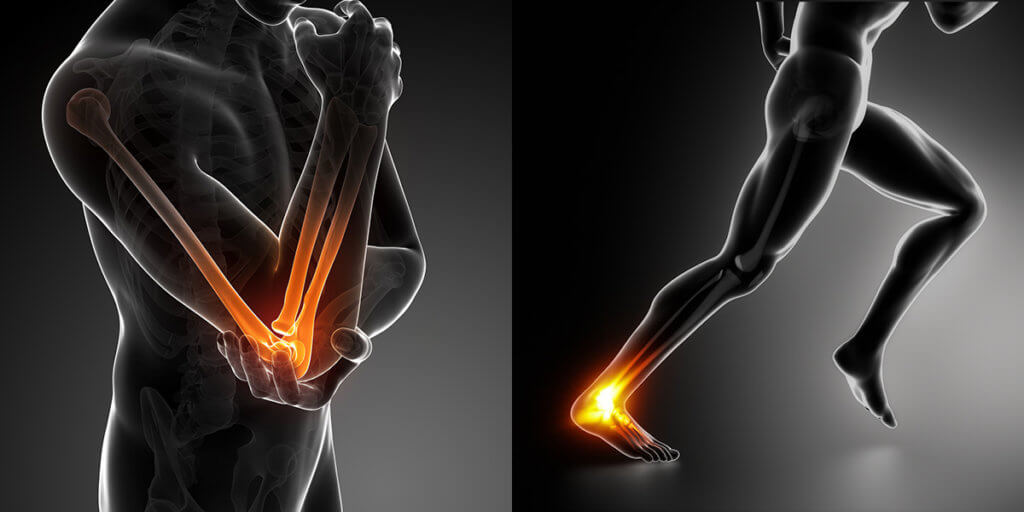
Chronic tendon disease, or tendinosis, refers to painful degeneration of a tendon without inflammation. It frequently occurs in the shoulder, elbow, knee, Achilles, or plantar fascia. Unlike tendonitis, which is pain and inflammation from an acute injury, tendinosis is the result of tendon injuries that occur over time, leading to the development of scar tissue. Repetitive motion injury, such as tennis elbow, is a common example of chronic tendon disease. Scar tissue does not have the same elasticity as normal, healthy tendon tissue which is what leads to the pain typically associated with chronic tendon disease.
Tendon injuries are often treated with RICE (Rest, Ice, Compression, and Elevation) initially. Physical therapy is also used as an early treatment in tendon disease, and is shown to be effective in preventing a chronic inflammation cycle. When pain persists, or where daily activities of the patient continue to aggravate a repetitive motion injury, steroid injections may be used to provide temporary relief. Steroid injections are effective for short term pain relief, but can cause tendon degeneration when repeated over time, leading to or worsening chronic tendon disease. If tendon pain is present for three months or more, it is considered chronic.
When standard therapy is ineffective, surgical debridement may be required. Debridement is the removal of damaged tissue, allowing for the regeneration of healthy tendon fibers. Typically, this has required open surgery with an incision and extensive recovery. Tenex Health TX™ is an innovative procedure that offers a minimally invasive alternative to surgery.
In this procedure, the doctor inserts the TX MicroTip™ device into the damaged tendon through a small, quarter inch incision after numbing the skin with a local anesthetic. Anesthesia and sedation are not required. Guided by ultrasound imaging, the physician uses the TX MicroTip™ device to debride the damaged tissue. Chronically damaged tendon tissue is easily identified on ultrasound due to its characteristic appearance. The TX MicroTip™ device loosens the damaged tissue using ultrasonic energy and gently removes it with constant irrigation.
The procedure takes less than 5 minutes, does not require stitches, and the patient can typically resume daily activities after 1-2 days of rest. The full recovery period generally takes 6-8 weeks depending which tendon was treated, with physical therapy beginning after 3 weeks. Soreness at the site of the treated area is common and is effectively treated with ice. Complications are rare and usually mild. 85% of treated patients report experiencing substantial pain relief following the procedure.
Dr. Lawrence Keating, MD of Community Care Physicians' Interventional Radiology can perform the Tenex Health TX™ procedure. The procedure is performed in the Interventional Radiology suite at Albany Medical Center. Patients who are referred to Community Care Physicians' Interventional Care for chronic tendon pain will consult with one of our specialists at the Interventional Radiology clinic in Latham to determine if they are a candidate for the Tenex Health TX™ procedure. The specialist will base the determination on the results of an ultrasound examination of the affected tendon. Ultrasound examination can also be used to diagnose other medical problems involving the tendon.
The Tenex Health TX™ procedure offers similar relief to chronic tendon pain as open surgery, but is much less invasive, is much faster, and requires a shorter recovery time. If you think you may be a candidate or would like to learn more, talk to your doctor or click here for more information.
